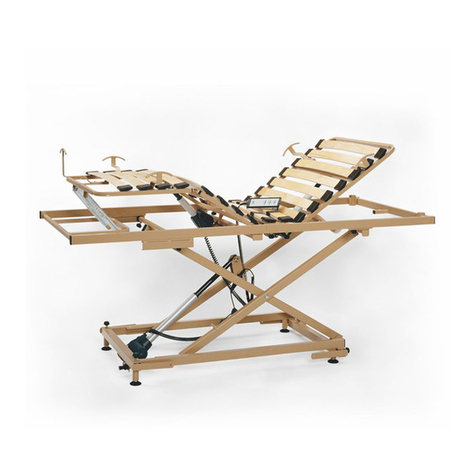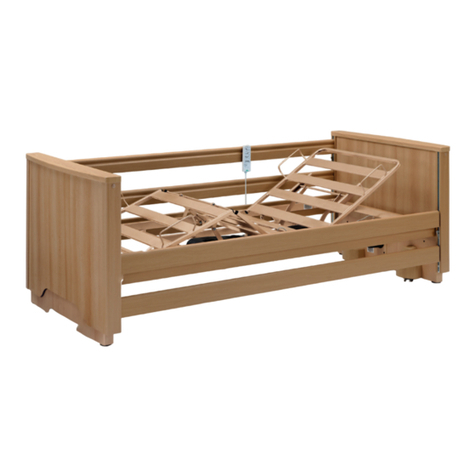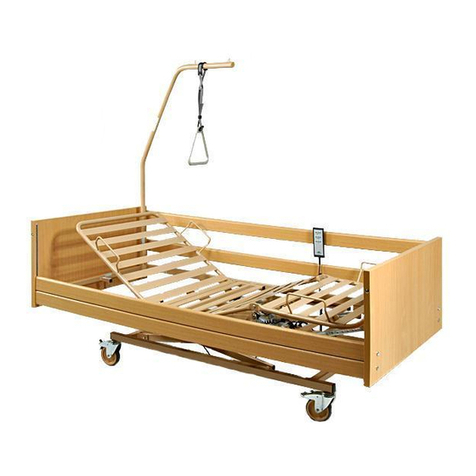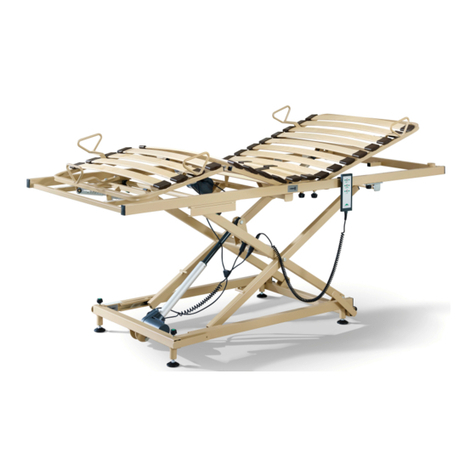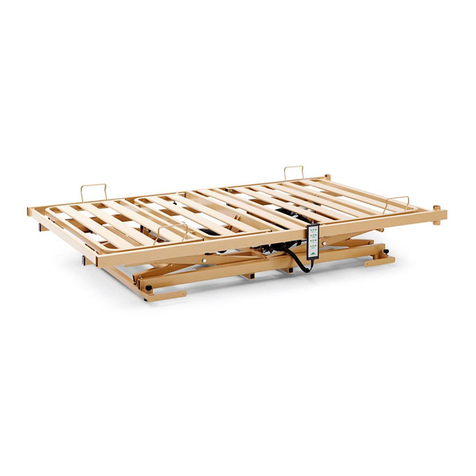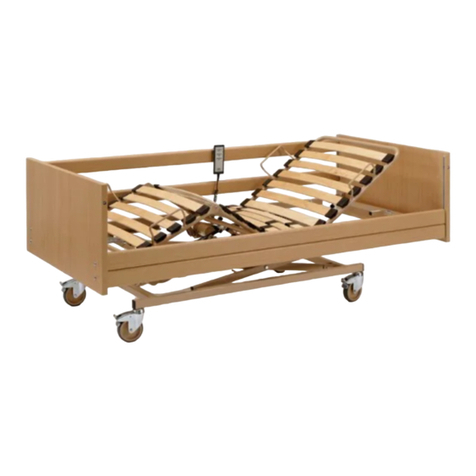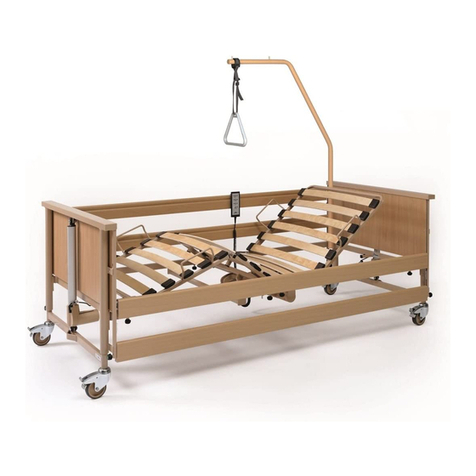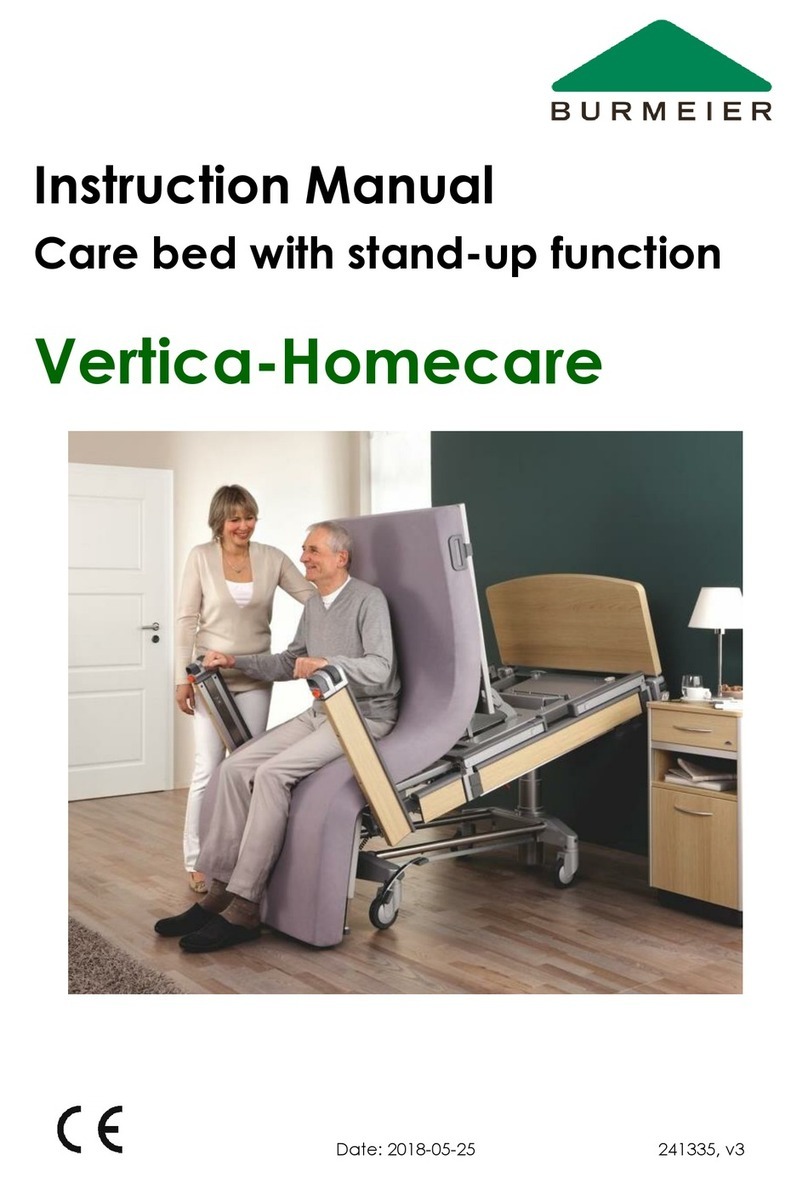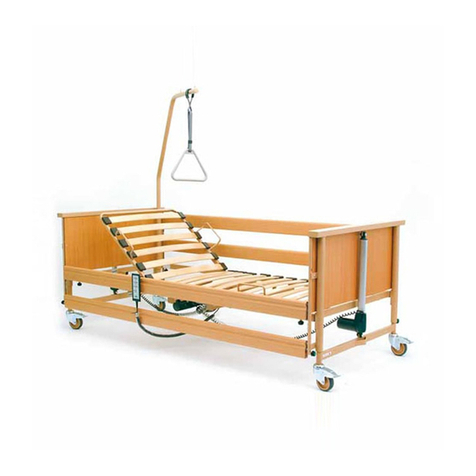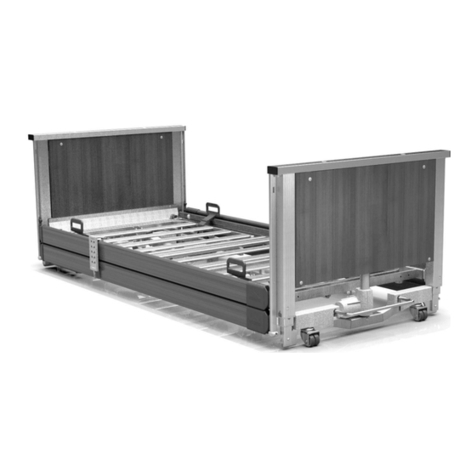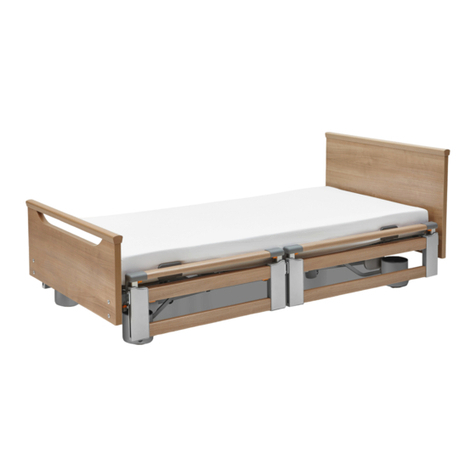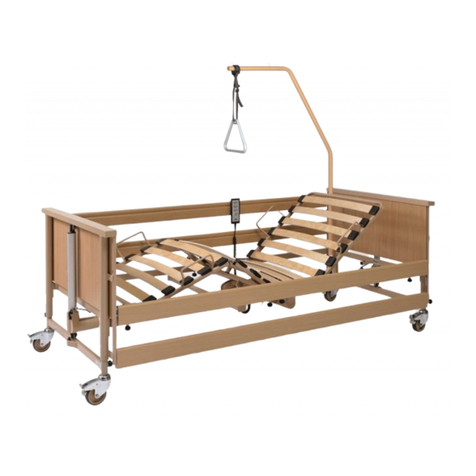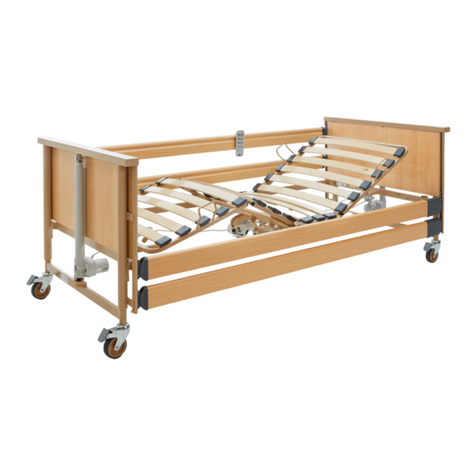Es ist darauf zu achten, dass der Lifter nicht
einer permanenten Sonnenbestrahlung aus-
gesetzt wird, um sowohl die Oberflächentem-
peratur als auch die Umgebungstemperatur
der Elektrokomponenten im zulässigen Rah-
men zu halten.
Es ist davon auszugehen, dass keine Ge-
fährdung der Steuerung und Steuerkompo-
nenten durch externe Kraftfelder oder
elektromagnetische Emissionen auftreten
kann.
Verwahren Sie den Handschalter bei
Nichtgebrauch stets so, dass er nicht unbe-
absichtigt herunterfallen kann (Aufhängen
am Haken.)
Stellen Sie sicher, dass das Kabel nicht
durch bewegliche Teile des Patientenlifters
beschädigt werden kann.
Die Verstellungen dürfen dann nur von
einer eingewiesenen Person oder in
Anwesenheit einer eingewiesenen Person
ausgeführt werden.
Achten Sie auf richtiges Einhängen der
Sitztücher und Gurte.
Stellen Sie sicher, dass die Sitztücher und
Gurte vorschriftsmäßig verwendet werden.
Prüfen Sie den korrekten Sitz des
verwendeten Sitztuches oder Gurtes.
Eine Checkliste zur Beurteilung des ordnungs-
gemäßen Zustandes finden Sie in Kapitel 6.
It must be ensured that the lift is not perma-
nently exposed to sunlight, in order that the
surface temperature and the ambient tem-
perature of the electrical components are
maintained within the admissible range.
It is assumed that the controls and the
control components are not exposed to
hazards due to external force fields or
electromagnetic emissions.
When not in use, always stow the handset
in such a way that it cannot fall to the floor
(hang it on the hook).
Make sure that the cable cannot be
damaged by moving parts of the patient lift.
The adjustments may then only be
carried out by, or in the presence of, a
person instructed in the proper operation of
the patient lift.
Ensure that seat slings and harnesses
and straps are hooked in securely.
Make sure that seat slings and harnesses
and straps are used correctly.
Check that the seat sling or harness or
strap used is correctly positioned.
You will find a checklist for evaluating the proper
condition of the patient lift in Chapter 6 of this in-
struction manual.
PRODUKTBESCHREIBUNG
BESTIMMUNGSGEMÄSSER GEBRAUCH
Der Patientenlifter „AGILE“ ist eine Hebevor-
richtung für behinderte Personen. Eingesetzt
wird dieses Gerät überwiegend im Homcare-Be-
reich für den Transfer (z.B.: Rollstuhl, Bett, Toi-
lette etc.).
Als Lastaufnahmemittel dienen Polstergurte,
Sitztücher etc.
Der „AGILE“ ist als traditioneller Kreisbogen-
lift konzipiert. Das per Fußpedal spreizbare
Fahrgestell macht das Umfahren von breiten
Rollstühlen problemlos möglich.
Die niedrige Bauart des Fahrgestells ermög-
licht auch ein Unterfahren niedriger Betten.
Bedingt durch die Doppelrohrkonstruktion der
Liftsäule hat der Auslegerarm eine sehr hohe
Seitenlaststabilität.
Der Patientenlifterbügel ist in verschiedenen
Abmessungen lieferbar. Gesteuert wird das
Gerät über eine Handbedienung mit Spiralkabel.
Die Stromversorgung erfolgt über eine Akku-
einheit.
Die Steuerbox mit integriertem Akku ist mit
einem elektronischen Überlastschutz sowie
einer Soft-Start / Stopp-Funktion ausgestattet.
PRODUCT DESCRIPTION
NORMAL OPERATING PROCEDURE
The "AGILE" patient lift is a lifting device for
handicapped persons. This lift is mainly for use
for transfers in the homecare sector (e.g. wheel-
chair, bed, toilet etc.).
Padded harnesses, straps and seat slings etc
are used as lifting accessories.
The "AGILE" is designed as a traditional
circular arc lift. The pedal-operated spreadable
legs allow the patient lift to fit round wide
wheelchairs.
The low profile construction of the legs also
allows access underneath low beds.
Due to the double-tubed construction of the
lift mast, the lift arm has an extremely high side
load stability.
The swivel bar attachment of the patient lift is
available in various sizes. The unit is controlled
using a hand control with a coiled cable.
The power is provided by a rechargeable
battery pack.
The control box with an integrated battery is
fitted with an electronic overload protection and
has a soft start/stop function.
8GEBRAUCHSANWEISUNG PATIENTENLIFTER AGILE · INSTRUCTION MANUAL FOR PATIENT LIFT AGILE
